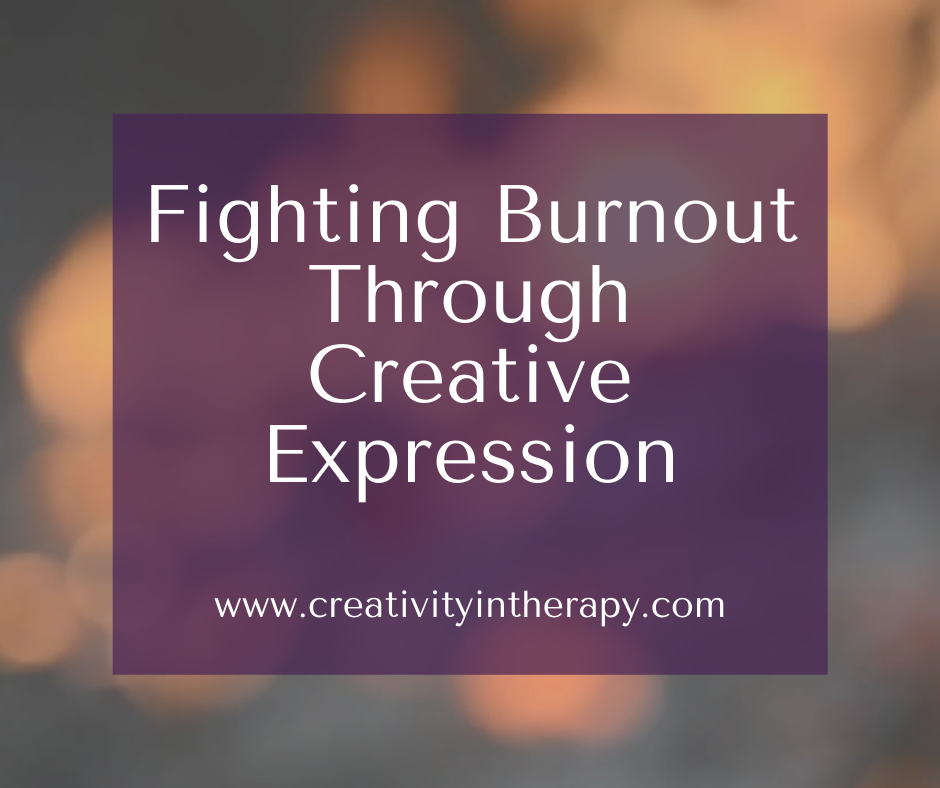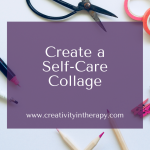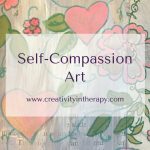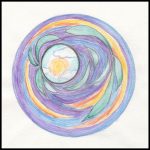
If you have been feeling burned out or noticing compassion fatigue, you are not alone in this. When we work in a helping profession, especially when we hear about or witness trauma on a frequent basis, we are always at risk of developing compassion fatigue. The many months of the pandemic have only added to the factors that could contribute to stress and burnout.
Many therapists and counselors have faced increased stress in their professional life (e.g., higher need clients, clients who feel stuck and do not make progress because of the pandemic or other systemic factors, a greater demand for services, the challenges of doing our work virtually or with increased safety protocols in place), as well as additional personal stressors (e.g., problems in childcare, financial insecurity, fear and worry regarding the pandemic, experiencing illness or grief and loss). Themes that I have heard over and over in the past several months in talking with other therapists have included feeling stuck, being exhausted, how hard it is to help clients when we are living through the same thing, not knowing how to help when the stressors on our clients seem never-ending, and struggling to find time for self-care.
Most therapist and counselors know the importance of self-care, but many struggle to put it into practice. Sometimes it’s hard to find time for it when we are already overwhelmed. Sometimes we don’t really know what things are actually effective self-care. Sometimes we struggle with feeling “selfish” focusing on ourselves when so much of our life and values are organized around helping others (and sometimes our workplace or family messages reinforce this toxic belief). And sometimes we do try to take care of ourselves, but it doesn’t seem like enough to balance out all the stressors and trauma exposure.
I recently read Burnout: The Secret to Unlocking the Stress Cycle, which has provided a lot of great information and tools to make sure I am addressing my own stress and self-care, as well as wanting to better support my clients and supervisees. I wanted to share one helpful piece of the book with you, as well as provide a creative call to action, to support you in taking care of yourself and recovering from or preventing burnout. Maybe you’ll learn something new in reading this, or maybe it will help you to refocus and prioritize what you already know to be an essential aspect of your work and life.
One of the concepts that is addressed in Burnout is the importance of dealing with both the stressors in our lives and our stress response. Just because a stressor has ended (e.g, your stressful day of supporting clients and hearing their struggles and trauma is over), does not mean that your body automatically let’s go of the stress. We often need to take action to complete the stress cycle – give our body a chance to release the stress and truly recognize that it is safe now.
In the book Emily Nagaski and Amelia Nagaski share seven actions that help complete the stress cycle:
- Physical exercise and movement
- Breathing
- Positive Social Interaction
- Laughter
- Affection
- Crying
- Creative Expression
If you are not currently making enough space for these things in your day, choose one and make a commitment. Of course, making plenty of time for all of these things is great, but we often need to start with one small, specific goal to make change.
If you would like to use creative expression to release your own stress, I share an idea below. After reading Burnout, I reviewed some of the various studies that have been done about the use of art in treating stress and burnout. Several different art directives, approaches, and media have been used in these studies – and all of them showed some positive effect – so the prompt below is by no means the only way to use creativity to deal with stress.
Creative Call to Action
Give yourself 30 minutes to creatively express your emotions and thoughts, paying particular attention to your stress, how your body feels, and thoughts about work. Allow yourself to express these thoughts and feelings in your art. Consider starting with a process-oriented approach, engaging with the art on a kinesthetic-sensory level. You may want to allow yourself time for tactile-focused engagement with the materials, enjoying the physical sensations of moving your body and exploring the material. As you let yourself move and release through the art, notice if you have something that you want to develop or express further in the art. It may just be lines and colors that express a feeling or it may be a symbol that comes to mind. Feel free to move on to more pages of paper as you work or continue to layer on the same surface. If you want to incorporate writing, feel free to use some of the time to journal about your stressors and feelings and/or to respond and reflect on the art work.
Want to give yourself more time, information, and connection to address your own burnout, compassion fatigue, or self-care? I have an online course available that includes information on how we can prevent and recover from burnout (there’s much more than what is included in this blog post), while incorporating creative exercises to help you through this process. You can take a look here – Fighting Burnout: Strategies for Self-Care and Creative Expression
I’d love to hear your thoughts! Comment below about what you do to prevent burnout as a helping professional or let us know how the activity above felt for you.
Carolyn Mehlomakulu, LMFT-S, ATR-BC is an art therapist in Austin, Texas who works with children, teens, and families. For more information about telehealth and online therapy, individual therapy, child and teen counseling, and art therapy services, please visit: www.therapywithcarolyn.com. Carolyn is also the author of The Balanced Mind – A Mental Health Journal, a guided journal that combines writing and art prompts to support your mental health.
This blog post contains affiliate links and I earn a small commission for your purchases. This blog is not intended to diagnose or treat any mental health conditions. All directives, interventions, and ideas should be used by qualified individuals within the appropriate bounds of their education, training, and scope of practice. Information presented in this blog does not replace professional training in child and family therapy, art therapy, or play therapy. Art therapy requires a trained art therapist.





This is such an important conversation for those of us in the creative arts and therapy field. We spend so much time teaching about self-care and I find we’re often mystified when we need to apply it to ourselves! Love your post here, great resources I’ll be looking into. Thanks Carolyn!